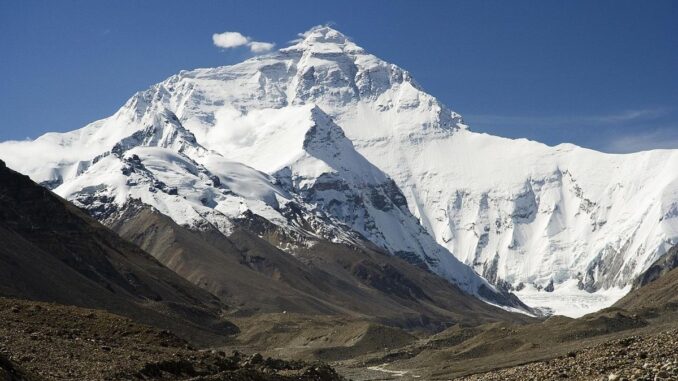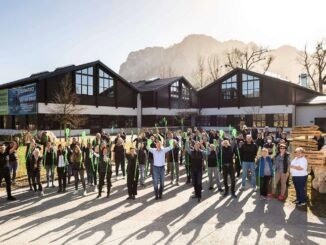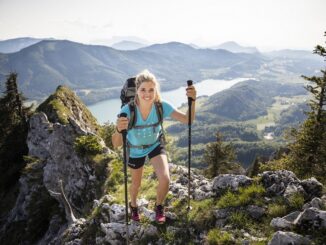
Nepal is a mythical destination for high altitude adventures, calling mountaineers, trekkers and explorers from across the world. It boasts eight of the world’s fourteen 8,000 metre peaks, of which the highest is Mount Everest.
Nepal has traditionally been a unique sanctuary for adventurers, not only because of its mountain peaks and diverse routes to reach them, but also the deep, enriching experience with nature and culture it offers. From scenic treks past remote mountain villages to technical climbs on ice and rock, Nepal’s Himalayas are reputed to be the ultimate playground for adventurers.
Of all the adventures Nepal has to offer, two of its most iconic odysseys are Island Peak Climbing in the Everest area and the Manaslu Circuit Trek in the Manaslu region. These trips embody the essence of Himalayan adventure, mixing physical exertion, raw natural beauty and cross cultural exchange.
Island Peak provides a demanding mountaineering experience for those interested in ascending a Himalayan peak. And the Manaslu Circuit provides a remote, culturally rich trek in a less travelled but equally stunning area. Both trips are geared towards different categories of adventure travel but have in common the spirit of exploration and adventure that defines the high Himalayas.
Island Peak Climbing is appropriate for those seeking to transition from trekking to Himalayan mountaineering. Island Peak, also known as Imja Tse is 6,189 metres in elevation and entails glacier travel and some technical knowledge. It offers a tough but authentic climb for both novice and experienced climbers. Located far within the Khumbu, the trek takes you through famous Sherpa villages like Dingboche and Chhukung with stunning views of Everest, Lhotse and Ama Dablam along the way.
The Manaslu Circuit Trek offers an off the beaten path experience taking you to the remote highlands that surround Mount Manaslu, the world’s eighth highest mountain. This trek is renowned for its unspoiled scenery and unchanged Tibetan Buddhist way of life. The trek picks up over days of easy slope along green valleys and high altitude mountain ridges, ultimately meeting its highest point at Larkya La Pass (5,106 metres). For trekkers seeking solitude and authenticity, the Manaslu Circuit is an adventure for them.
The best time to visit the Nepal Himalayas
Trekking and climbing in Nepal is possible throughout the year but the best time depends mostly on climate and personal preference. Generally, the two busiest times to visit are spring (March to May) and autumn (September to November). These months are best, with clear skies, moderate temperatures and stable weather which is ideal for high altitude adventures. The landscape comes alive with green vegetation and multicoloured wildflowers in spring while cool air, fresh atmosphere and enhanced clarity are possible in autumn after the monsoon rains.
Spring is best for those wanting to see flowering vegetation and warm weather at lower heights, along with great trekking conditions. It’s a great time for mountaineering ascents like Island Peak, when the snow is manageable and the days are longer. Autumn, on the other hand, is a pleasant time with the monsoon retreating and leaving a clean environment and clear skies. It’s the season for sweeping vistas of mountains and festivals and local colour.
Winter (December to February) and monsoon (June to August) periods, while less popular for high altitude expeditions, each have their own charm and challenges. Winter is marked by cold weather and snowfall, which makes some of the passes and trails impassable or even dangerous, but it can offer solitude and a unique snowy landscape. Monsoon season is marked by heavy rain and landslides, which can make trekking unsafe, but Nepal’s lower altitudes become green and verdant, perfect for those who wish to visit the foothills and cultural sites without the crowds.
Physical and mental preparation for high altitude adventures
Physical training for mountain adventures like Island Peak climbing or the Manaslu Circuit trek is necessary so that your trip will be safe and enjoyable. Cardiovascular endurance, strength and stamina are all to be focused on before your trip. Running, hiking, cycling and stair climbing are all great activities in developing the cardio tolerance and stamina required for extended periods of exertion over challenging terrain.
Developing the abdominal and leg muscles will also improve balance and combat fatigue. Do flexibility exercises wherever possible and undertake altitude hikes to acclimatise the body.
Mental preparation is as important as physical training. You must be ready to deal with exhaustion, challenging terrain and the unpredictability of mountain weather. Optimism, patience and flexibility in plans are required when confronting adversity and unexpected situations.
Building resilience through meditating, visualising or mentally rehearsing your objectives will keep your determination and focus intact. A sound mind and a well-prepared body will increase your prospects of success and enjoyment of these demanding Himalayan treks significantly.
Guided or independent? How to plan your Himalayan experience
Choosing between a guided and an independent adventure depends on your preference and experience level. A guided climb or trek is ideal for first-time adventurers or for those who want an easy, well organised experience. Having guides gives you the advantages of arrangements for permits, lodgings and food and direction along your route. They provide local information, cultural understanding and safety support to make your trip hassle-free and enjoyable.
Independent trekking is flexible and gives you more freedom. It is just meant for experienced travellers who can organise the trip on their own. Treks like Langtang or Everest Base Camp are more suitable for independent trekkers as they are well set and have well-trodden routes. But in restricted or off the beaten-path areas like Manaslu, Kanchenjunga, etc, a licensed guide is required. Trekking solo is cost-effective and gives you more independence in scheduling your own itinerary, but it necessitates careful planning and more personal responsibility.
Ultimately, it’s a matter of your own interests, goals and comfort level whether to choose a guided or independent adventure. If safety, immersion in local culture and minimising stress are top on your list, an escorted outing is best. But if you are an experienced hiker who is seeking solitude and freedom, a solo adventure may be exceedingly rewarding.





Be the first to comment